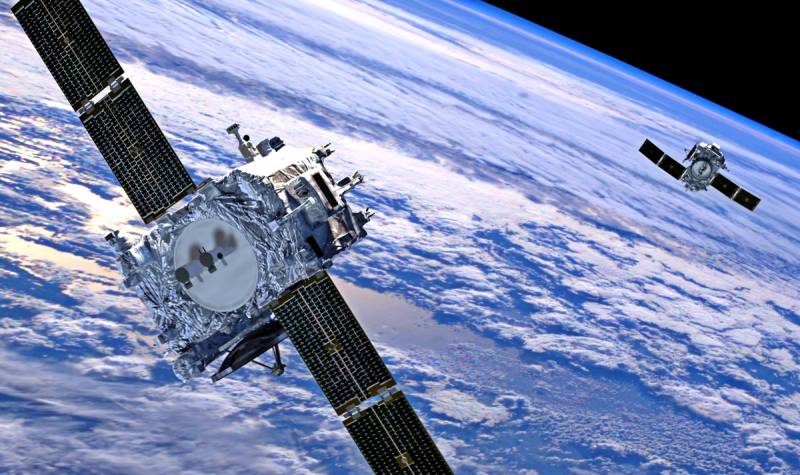Russia has taken near-Earth orbit under control
Due to the active development of space by mankind, near-Earth space is very saturated with objects of artificial origin.
The Russian Outer Space Monitoring System has 13 of them in its catalog. At an altitude of 000 to 160 kilometers (low Earth orbit) there are seven thousand objects created by human hands over 2000 centimeters each. At a distance of 20 to 2000 kilometers to the Earth, about six thousand space objects rotate in high orbit, and their sizes vary in the range from 50 to 000 centimeters. NASA experts estimated about 20 man-made space bodies in Earth orbit. Well, they know better how much and what the United States of America has launched.
The state corporation Roscosmos came to the conclusion that in just 1-2 centuries, access to space in general may be blocked by deadly debris moving in orbit at high speeds. So in two collapsed fragments in 2009, the Iridium 33 telecommunications satellite launched by the USA and the military satellite Cosmos-2251 launched into orbit during the Soviet Union collapsed.
It is known that space debris is also a great danger for the ISS, located in the highest layers of the atmosphere. Periodically, the ISS has to perform evasion maneuvers of various objects, spending large volumes of fuel for this. Scientists even suggested placing laser guns on the orbital station so that astronauts could vaporize small debris, and dispose large ones into the atmosphere, where they could burn without harm.
In Soviet times, there was a single system for observing near-Earth orbit. Unfortunately, after the events of 1991, most of the scientific infrastructure remained abroad and ceased to fulfill its mission. However, the need to maintain control over satellite constellations and dangerous space debris forced the Russian Federation to begin restoring a network of telescopes around the world.
Russian space observatories appeared in Bolivia, Georgia, Tajikistan, Switzerland, Moldova, Uzbekistan and Mongolia, even in Ukraine, in Uzhgorod. The data processing is carried out by the Keldysh Institute of Applied Mathematics on a supercomputer with a productivity of 100 trillion operations in one second. Thanks to them, finally, it was possible to completely take control of the near-Earth orbit.
The Russian Outer Space Monitoring System has 13 of them in its catalog. At an altitude of 000 to 160 kilometers (low Earth orbit) there are seven thousand objects created by human hands over 2000 centimeters each. At a distance of 20 to 2000 kilometers to the Earth, about six thousand space objects rotate in high orbit, and their sizes vary in the range from 50 to 000 centimeters. NASA experts estimated about 20 man-made space bodies in Earth orbit. Well, they know better how much and what the United States of America has launched.
The state corporation Roscosmos came to the conclusion that in just 1-2 centuries, access to space in general may be blocked by deadly debris moving in orbit at high speeds. So in two collapsed fragments in 2009, the Iridium 33 telecommunications satellite launched by the USA and the military satellite Cosmos-2251 launched into orbit during the Soviet Union collapsed.
It is known that space debris is also a great danger for the ISS, located in the highest layers of the atmosphere. Periodically, the ISS has to perform evasion maneuvers of various objects, spending large volumes of fuel for this. Scientists even suggested placing laser guns on the orbital station so that astronauts could vaporize small debris, and dispose large ones into the atmosphere, where they could burn without harm.
In Soviet times, there was a single system for observing near-Earth orbit. Unfortunately, after the events of 1991, most of the scientific infrastructure remained abroad and ceased to fulfill its mission. However, the need to maintain control over satellite constellations and dangerous space debris forced the Russian Federation to begin restoring a network of telescopes around the world.
Russian space observatories appeared in Bolivia, Georgia, Tajikistan, Switzerland, Moldova, Uzbekistan and Mongolia, even in Ukraine, in Uzhgorod. The data processing is carried out by the Keldysh Institute of Applied Mathematics on a supercomputer with a productivity of 100 trillion operations in one second. Thanks to them, finally, it was possible to completely take control of the near-Earth orbit.

Information